
views
Building Your Lung's Capacity
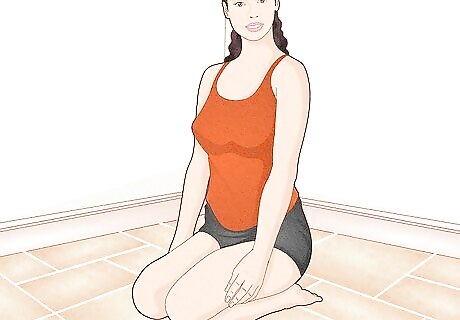
Sit or lie down on solid ground. Find comfortable ground to lay down on or sit upright on your knees. Practice holding your breath for long periods of time out of water first so you can practice proper breathing techniques.

Relax your mind and body. While lying down or sitting, focus on clearing your mind of all extra thoughts and worries. Don't move your body around; sit as still as possible. This lowers your blood pulse. A lowered pulse means your body is using less oxygen. Your body needs oxygen to move and function. The less you move, the less oxygen your body will need. First, practice holding your breath without moving. Then, add in simple, slow movements like walking to train your body to conserve oxygen. This will prepare your body to dive and swim with less air.
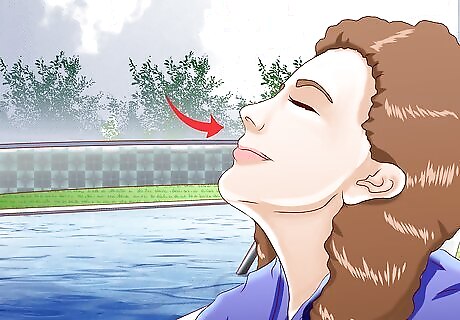
Inhale slowly using your diaphragm. You should feel your belly rise instead of your shoulders if you're using your diaphragm to inhale. Your diaphragm is the muscle attached to the bottom of your lungs that helps expand your lungs to hold more oxygen. Start inhaling for 5 seconds at a time. Then, increase by a few seconds every time you inhale. You will be stretching out your lungs and increasing their ability to hold more air. Practicing deep breathing on land can help improve how long you can hold your breath underwater. Puffing up your cheeks does not mean that you have enough oxygen. It makes you use face muscles that spend oxygen instead of conserving it.
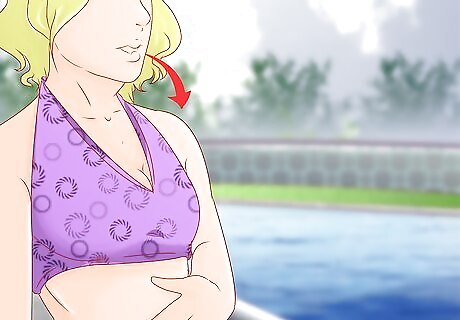
Exhale a little at a time. While you hold your breath, let out little puffs of air at a time. You will feel your body try and force you to exhale completely. These little convulsions are your body telling you that carbon dioxide is building up in your lungs. Push out as much air as possible when you've finished to get rid of any extra carbon dioxide. As you hold your breath, your body turns oxygen into carbon dioxide. Carbon dioxide is toxic to your body and can cause you to pass out. Once you get past the convulsions, your spleen releases more oxygen-filled blood into your bloodstream. Hold your breath past this point to be able to hold it even longer.
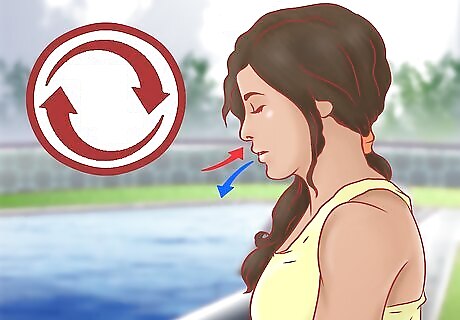
Repeat inhaling and exhaling. Every time you repeat a breath cycle, push yourself to go a little longer each time. Breathe in and out for two minutes at a time, keeping yourself at a calm and even pace. You are training your body to handle being without oxygen.
Going Under Water

Breathe correctly several times. Before going underwater, spend five minutes breathing in and out slowly like you've practiced. Relax your body as well while sitting or standing in the shallow end of a pool or body of water.
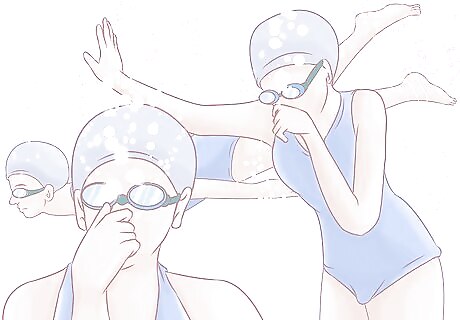
Dive slowly below the surface. Take one deep breath through your mouth and lower yourself below the surface of the water. Keep your mouth and nose closed while underwater. Use your fingers to hold your nose shut if you need. Staying relaxed is important since there is more risk in holding your breath underwater than on land.

Resurface slowly. Once you've reached your body's limit, swim or push yourself to the surface. Blow out any extra air as you rise so that you can take a fresh breath immediately. Before diving again, take another two to five minutes to do a few breath cycles to get your body back to normal oxygen levels. If you begin to panic at any moment, relax and surface. Panicking can lead to accidental inhalation underwater, which can cause drowning.
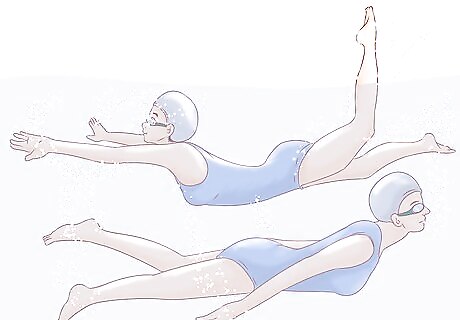
Add in movement once you're comfortable. Swimming and forcing your body to dive deeper will use up more oxygen. Don't try to exert yourself right away. When diving, you want to remain as relaxed and calm as possible, keeping your pulse low. Swimming is the complete opposite. Your pulse will be high and your muscles moving quickly.
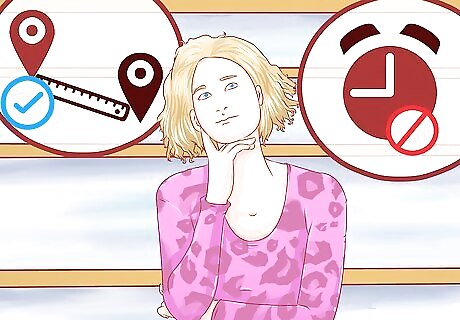
Measure your progress by distance and not time. As you begin to go longer without breath, avoid using a timer or counting seconds because you will mentally psych yourself out. Instead, measure how far you can swim across the pool or how deep you can go before needing air. If you want to keep track of your time, have a friend time you instead.
Staying Safe
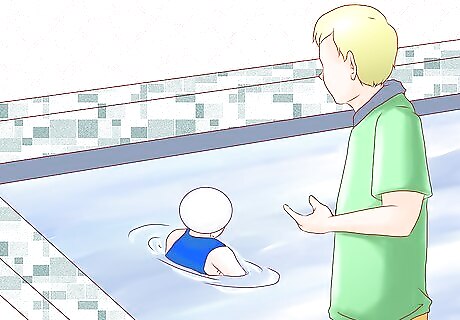
Have another person nearby while you practice. Practicing alone is dangerous because you cannot help yourself to safety if you pass out or begin choking or drowning. To be extra safe, make sure that your partner is CPR trained so if there's an emergency, they're able to help you out.
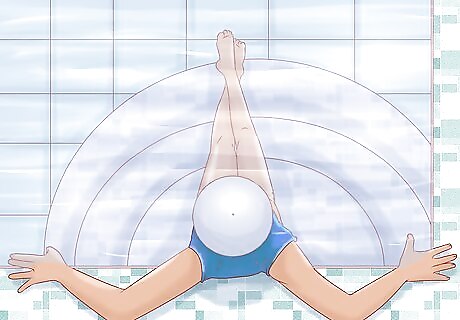
Stay in shallow waters at first. This way you can stand or sit while going underwater. Treading water requires extra energy that uses your precious oxygen. It's also easier to get to the surface quickly in case you need air or have an emergency.

Listen to your body. If your vision begins to fade or you feel light-headed, go to the surface immediately. Risking your personal safety is not as important as a few extra seconds underwater.


















Comments
0 comment